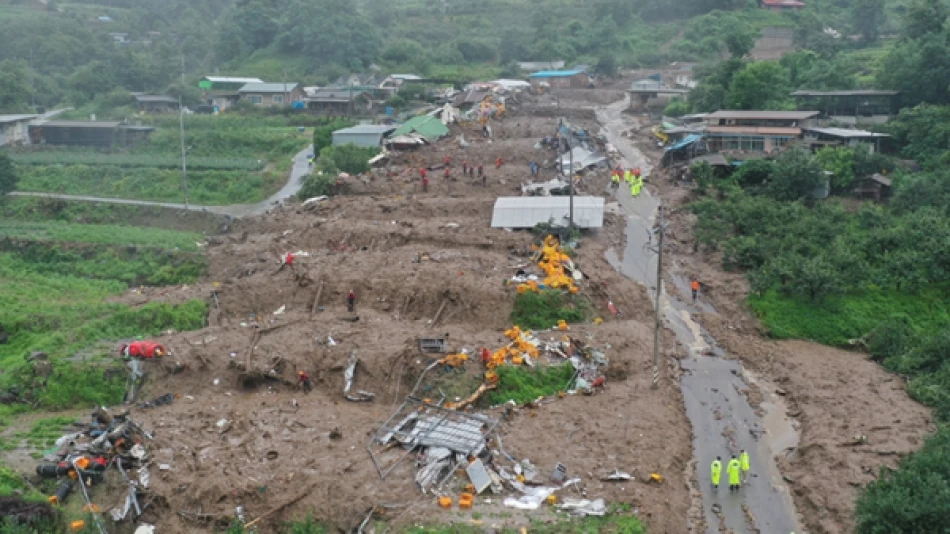
Heavy Downpours Claim Lives in South Korea as Flood Toll Rises
South Korea's Deadly Monsoon Season Exposes Infrastructure Vulnerabilities as Climate Risks Intensify
South Korea's latest bout of extreme weather has claimed 14 lives and left 12 missing after four days of torrential rains triggered deadly landslides and widespread flooding. The disaster in tourist hub Gapyeong underscores growing concerns about the country's preparedness for increasingly severe monsoon seasons driven by climate change, with economic implications extending far beyond immediate recovery costs.
Tourism and Economic Hub Hit Hard
The deaths in Gapyeong, a popular tourist destination known for its scenic landscapes and proximity to Seoul, highlight the vulnerability of South Korea's tourism infrastructure to extreme weather events. Two fatalities were confirmed Sunday following a landslide that damaged homes and sent floodwaters sweeping cars away, bringing the national death toll to 14 since Wednesday.
The disaster forced the evacuation of nearly 13,000 people and caused extensive property damage—1,920 cases involving public property and 2,234 affecting private assets. These numbers reflect not just immediate human costs but significant economic disruption in a country where domestic tourism has become increasingly important following pandemic-related travel restrictions.
Government Response Shifts to Recovery Mode
South Korea's government established a joint task force Sunday to transition from emergency response to damage recovery support, signaling the acute phase of the crisis may be passing. The Korea Meteorological Administration forecasts the heavy rains will cease Sunday, followed by a heat wave—a weather whiplash pattern becoming increasingly common across East Asia.
Infrastructure Under Pressure
The scale of property damage reveals systemic challenges in South Korea's infrastructure resilience. Unlike Singapore or the Netherlands, which have invested heavily in flood management systems, South Korea's rapid urbanization has often prioritized development speed over climate adaptation. The concentration of damage in both public and private sectors suggests inadequate coordination between urban planning and disaster preparedness.
Regional Climate Pattern Intensification
This disaster fits a broader regional trend of intensifying monsoon seasons across East Asia. China recently experienced similar deadly flooding, while Japan has upgraded its disaster preparedness protocols following repeated extreme weather events. South Korea's mountainous terrain makes it particularly susceptible to landslides during heavy rainfall, a risk that climate models predict will worsen.
The northward movement of the storm system overnight demonstrates the unpredictable nature of these weather patterns, complicating evacuation and emergency response planning. This unpredictability poses challenges for insurance markets and disaster risk modeling, potentially affecting Korea's attractiveness for certain types of foreign investment.
Economic and Policy Implications
Beyond immediate recovery costs, this disaster will likely accelerate South Korea's climate adaptation investments. The government has already committed to significant green infrastructure spending, but events like this underscore the urgency of implementation. For investors, this translates to opportunities in flood management technology, early warning systems, and resilient construction materials.
The timing during peak summer tourist season amplifies economic impact, particularly for small businesses in affected areas. South Korea's domestic tourism sector, which has been crucial for economic recovery, faces another setback that could influence consumer confidence and spending patterns.
As extreme weather becomes more frequent and severe, South Korea's experience serves as a case study for other rapidly developing Asian economies. The country's response and recovery measures will be closely watched by regional neighbors facing similar climate challenges, potentially influencing broader East Asian approaches to disaster preparedness and infrastructure resilience.
 Layla Al Mansoori
Layla Al Mansoori







